When Drawdown Georgia launched in 2020, it was a full circle moment in many ways. It took us back to the original epiphany that inspired Ray Anderson’s mission to transform his company, Interface, into a 21st century enterprise where he and his team would, in his words: “. . . spend the rest of our days harvesting yester-year’s carpets and other petrochemically derived products and recycling them into new materials; and converting sunlight into energy; with zero scrap going to the landfill and zero emissions into the ecosystem. And we’ll be doing well … very well … by doing good. That’s the vision.”
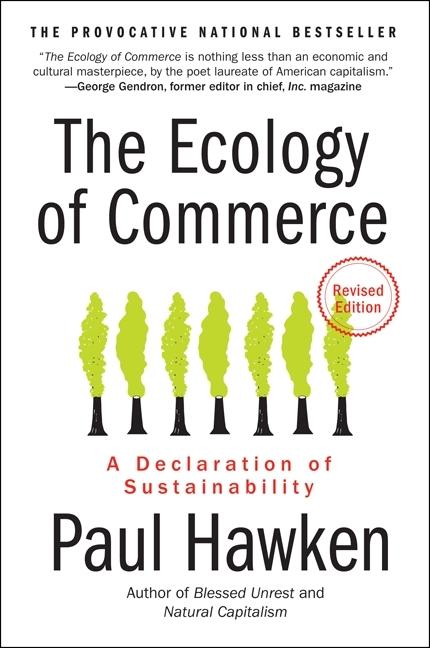 As students of Ray Anderson’s journey, we at the Foundation pay attention to the work of Ray’s “Eco Dream Team,” the group of experts that Ray collected to give form and substance to his vision. In the mid-1990s, that vision was a fairly outlandish notion – making a petroleum intensive business like carpet manufacturing sustainable.
As students of Ray Anderson’s journey, we at the Foundation pay attention to the work of Ray’s “Eco Dream Team,” the group of experts that Ray collected to give form and substance to his vision. In the mid-1990s, that vision was a fairly outlandish notion – making a petroleum intensive business like carpet manufacturing sustainable.
If you know the story, you know that Ray’s original epiphany came at the behest of a customer request – a complaint, really– that “Interface didn’t understand sustainability.” Through a series of serendipitous moves, Paul Hawken’s book, The Ecology of Commerce, landed on Ray’s desk. The timing was perfect – Ray was just preparing to give an internal talk on the company’s environmental vision, and he was the first to admit that he didn’t have a vision.
Led by equal parts curiosity and desperation, he picked up Hawken’s book. Over the next several nights, his imagination was sparked by the book’s thesis – that earth and all of its living systems are in decline, and that business and industry are the only institutions wealthy enough and pervasive enough to reverse it.
Ray went on to call that moment a ‘spear in the chest’ – the realization that his company, his ‘third child’ after his two natural daughters, was as he put it, ‘a plunderer of the earth.’
The book galvanized not only Ray’s vision for Interface, but a fast and devoted friendship between Ray and Paul Hawken, who went on to become an advisor to both the company and the Foundation that bears Ray’s name.
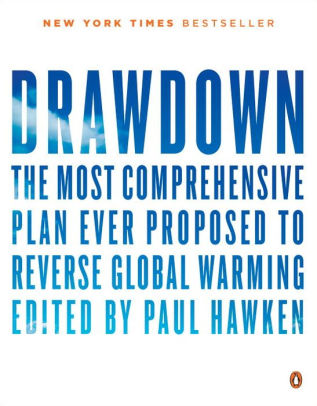 So in 2017, when Project Drawdown, founded by Paul, published Drawdown: The Most Comprehensive Plan Ever Proposed to Reverse Global Warming, we couldn’t help but look for an opportunity to move Paul’s roadmap for reversing climate change from idea into action.
So in 2017, when Project Drawdown, founded by Paul, published Drawdown: The Most Comprehensive Plan Ever Proposed to Reverse Global Warming, we couldn’t help but look for an opportunity to move Paul’s roadmap for reversing climate change from idea into action.
The thesis is that there are at least 100 solutions to climate change that already exist in various forms around the world, and all we need to do to begin to reduce emissions is to scale those solutions.
Project Drawdown, the Movement
Project Drawdown, founded in 2014 by Paul Hawken and climate advocate Amanda Ravenhill, is a 501(c)(3) nonprofit organization that exists to vet and validate climate solutions, and to create opportunities for people, companies, communities, academics and the like to learn from and further the ability to scale those solutions.
Led by Executive Director Jonathan Foley, Project Drawdown aims to support the growing constellation of efforts to move climate solutions forward and move the world toward Drawdown—as quickly, safely, and equitably as possible.
What if everybody did it?
Ray Anderson was a prolific thinker, writer and speaker in his later years, using his voice and his vision for Interface to paint a picture of possibility. He often referenced Immanuel Kant’s categorical imperative for us to “act only in accordance with that maxim through which you can at the same time will that it become a universal law” – or as Ray put it, think about it this way: “what if everybody did it?”
Ray’s interpretation of the maxim was the ultimate tale of possibility, imploring his audience to imagine sustainability as a global movement, one that was as much a moral imperative as it was a sensible one.
Led both by Ray’s logic and the compelling science of Drawdown, the Foundation launched in 2019 an exploration into what an effort to localize Drawdown might look like. Could we trim the 100+ solutions identified by Drawdown down to a shorter list of relevant and achievable solutions that could be both measured and tracked, perhaps by a state?
Bringing Georgia’s Climate Solutions Home
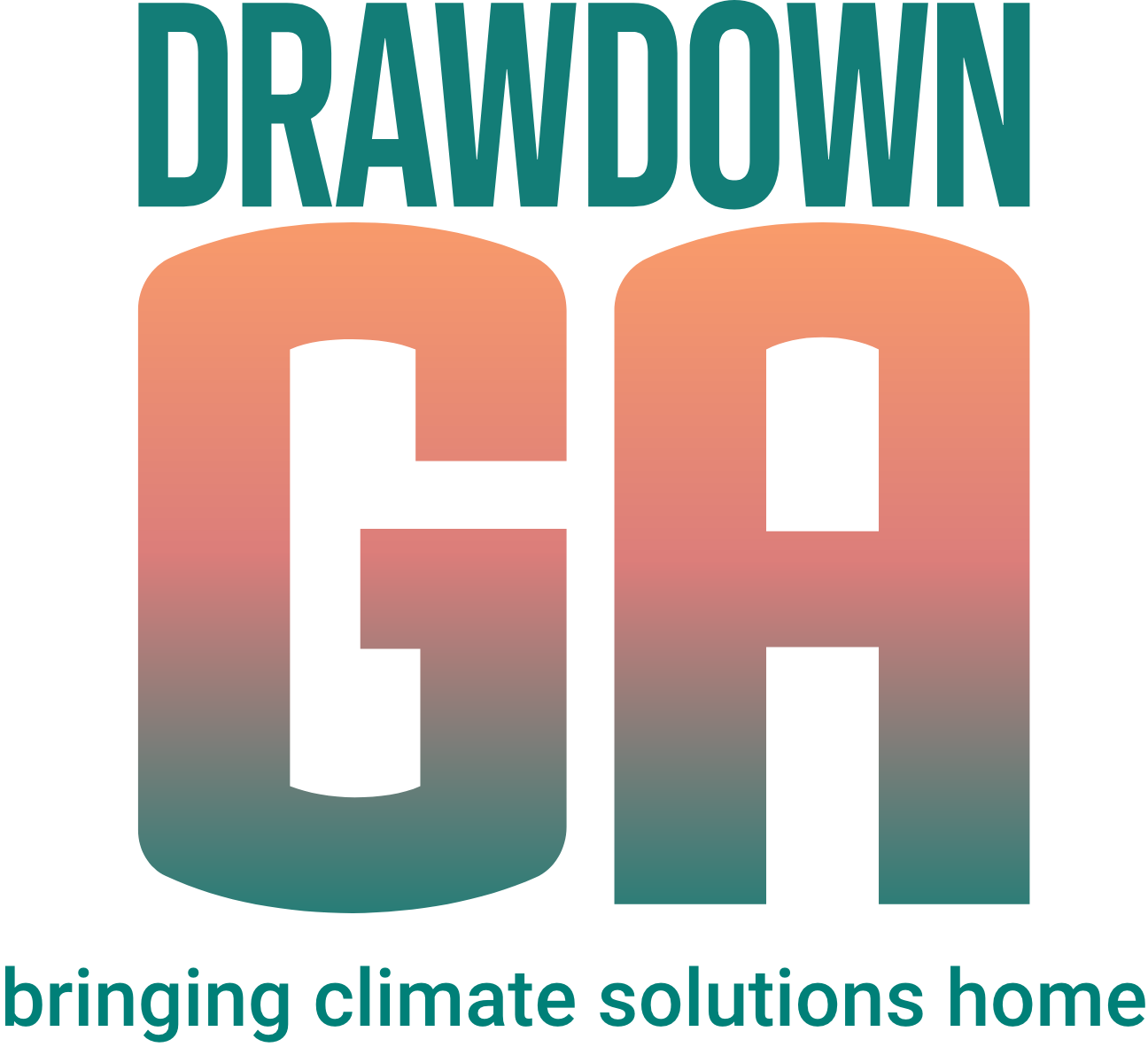 Over 18 months, a team of the state’s best researchers and scientists took a deep dive into the data to determine what is possible to achieve within the Drawdown framework, leveraging Georgia’s abundant economic, social and natural resources. The team set a fast-approaching deadline of 2030 to ensure that we’d be well on the road to net zero by 2040. If we get this right, we said, we can cut Georgia’s carbon impact significantly, putting us on the road to a low carbon economy.
Over 18 months, a team of the state’s best researchers and scientists took a deep dive into the data to determine what is possible to achieve within the Drawdown framework, leveraging Georgia’s abundant economic, social and natural resources. The team set a fast-approaching deadline of 2030 to ensure that we’d be well on the road to net zero by 2040. If we get this right, we said, we can cut Georgia’s carbon impact significantly, putting us on the road to a low carbon economy.
The expert team of Georgia-based academics, climate scientists, and researchers was led by the Georgia Institute of Technology, in partnership with Emory University, Georgia State University and the University of Georgia.
After several rounds of vetting, the team determined that Drawdown Georgia’s mission would be built on the state’s capacity for progress against emissions reductions in five high impact areas, measured in megatons of carbon.
A megaton of carbon is defined as 1 million metric tons of carbon dioxide-equivalent. Against a 2005 baseline of 156 megatons of net emissions, Drawdown Georgia estimates that Georgia’s carbon footprint can be cut to about 67 megatons by 2030, or a 57% reduction. The improvements come primarily from these sectors:
- Electricity: Electricity is Georgia’s second-largest source of greenhouse gas (GHG) emissions. According to the Drawdown Georgia GHG Emissions Tracker, electricity sector emissions have decreased in recent years as coal plants were replaced with cleaner sources. In 2021, the electricity sector was responsible for about 53 megatons of GHG emissions. Drawdown Georgia estimates we can reduce carbon emissions by 9 megatons by 2030 with solutions like cogeneration, demand response, rooftop solar, large scale solar and landfill methane capture.
- Buildings & Materials: In 2017, Georgia’s commercial and residential buildings were responsible for about 30% of the state’s emissions. We know that increasing energy efficiency in existing buildings can reduce electricity and energy demand. This category also considers the emissions associated with materials, such as recyclables and hydrofluorocarbon refrigerants. All in, Drawdown Georgia estimates we can reduce carbon emissions by 6 megatons by 2030.
- Food & Agriculture: The way we grow our food, what we eat, and what happens to excess and waste are all essential parts of our carbon footprint. To cut carbon substantially, we need to grow food in ways that benefit the land, sequester carbon, foster plant-forward diets, reduce food waste, and increase composting. In Georgia, the food waste in 2017 was approximately 2.05 million tons, and it is estimated that, on average, each ton of food waste reduced would decrease GHG emissions by 1.35 tons. If we reduce our food waste by 20% by 2030, we can decrease emissions by 5 megatons.
- Land Sinks: Georgia’s natural land sinks -- including 22 million acres of working forests and rich coastal wetlands -- sequester up to 46 megatons of GHG emissions each year, offsetting about 27% of total emissions in the state. It’s critical to increase the capacity to sequester carbon as the state reduces emissions elsewhere, and we can do it with innovative practices like afforestation and silvopasture, temperate forest stewardship, and by protecting our coastal wetlands. We estimate we can grow our land sinks enough to sequester an additional 5 megatons by 2030.
- Transportation: Georgia has nearly 90,000 miles of public roads. In 2021, vehicles accounted for 41% of the state’s GHG emissions -- our single largest source. Switching out gasoline and diesel-powered vehicles for electric vehicles, increasing mass transit, and adopting more alternative mobility options will help us dramatically reduce these emissions – with the potential to eliminate 8 megatons of emissions by 2030.
In addition to these 20 specific and scalable solutions, Drawdown Georgia is also addressing the social, economic, environmental and health impacts of scaling these solutions by accounting for the impacts Beyond Carbon. Specifically, Drawdown Georgia has identified both positive and potential negative impacts beyond reversing climate change, including:
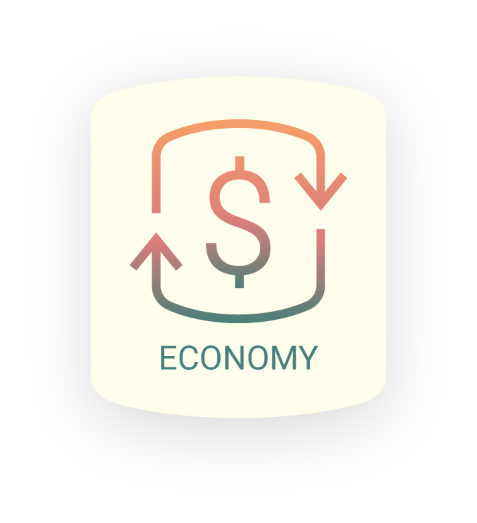 Economic: Drawdown solutions can drive local economic and employment growth, bring high-skill jobs to our state, and drive infrastructure investments that make Georgia an attractive place to work and live. Most solutions will create local jobs, especially in the solar and energy efficiency fields. However, it’s also possible that some solutions may displace workers as we shift from coal-powered electricity to renewable forms of energy, for example. Other solutions can increase property values and tax revenues, but on the flip side, may result in gentrification. Bringing together communities of leadership will help ensure a net economic benefit and a smooth transition to a thriving green economy.
Economic: Drawdown solutions can drive local economic and employment growth, bring high-skill jobs to our state, and drive infrastructure investments that make Georgia an attractive place to work and live. Most solutions will create local jobs, especially in the solar and energy efficiency fields. However, it’s also possible that some solutions may displace workers as we shift from coal-powered electricity to renewable forms of energy, for example. Other solutions can increase property values and tax revenues, but on the flip side, may result in gentrification. Bringing together communities of leadership will help ensure a net economic benefit and a smooth transition to a thriving green economy.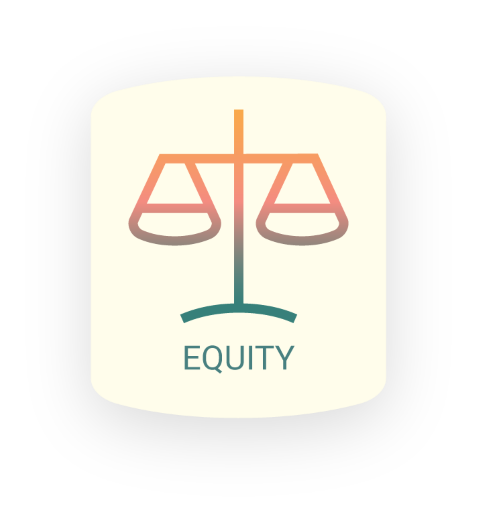 Equity: Successful climate solutions lift people up, ensure that all communities are at the table, and deliver benefits to those who are under-resourced. Focusing on equity ensures that community concerns are addressed and advantages widely shared. At the same time, making sure that solutions like rooftop solar and retrofitting are affordable and accessible means more people will have better access to clean energy. Retrofitting can also create jobs and business opportunities.
Equity: Successful climate solutions lift people up, ensure that all communities are at the table, and deliver benefits to those who are under-resourced. Focusing on equity ensures that community concerns are addressed and advantages widely shared. At the same time, making sure that solutions like rooftop solar and retrofitting are affordable and accessible means more people will have better access to clean energy. Retrofitting can also create jobs and business opportunities.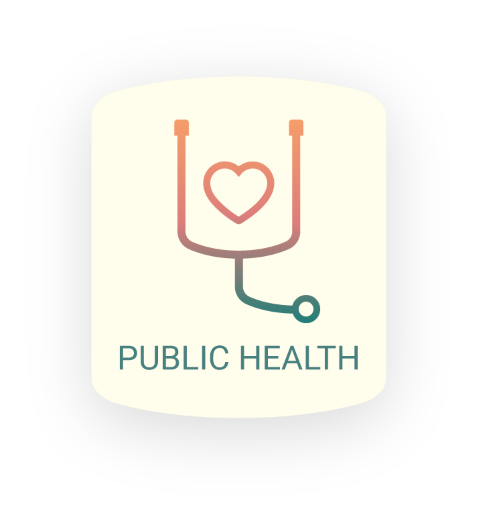 Public Health: Solutions like electric vehicles, mass transportation, alternative mobility, healthy buildings, and renewable energy improve air quality and reduce the chances that our kids will have allergies and/or asthma. Shifting to a plant-forward diet and a kinder, gentler agricultural system nourishes our bodies and our ecosystem. We expect to see many positive impacts on public health with substantial air quality improvement when electricity and transportation solutions are scaled, and quality of life and education benefits from food and forestry solutions.
Public Health: Solutions like electric vehicles, mass transportation, alternative mobility, healthy buildings, and renewable energy improve air quality and reduce the chances that our kids will have allergies and/or asthma. Shifting to a plant-forward diet and a kinder, gentler agricultural system nourishes our bodies and our ecosystem. We expect to see many positive impacts on public health with substantial air quality improvement when electricity and transportation solutions are scaled, and quality of life and education benefits from food and forestry solutions.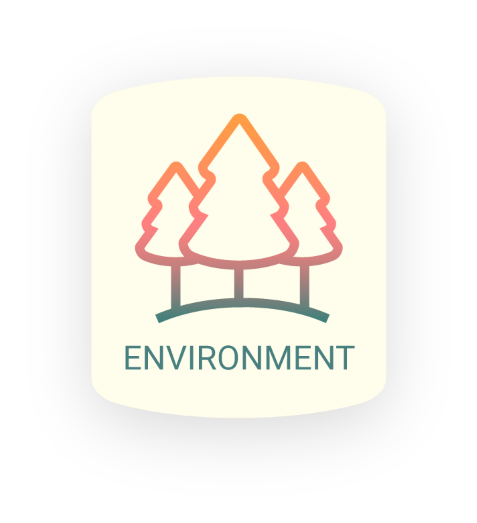 Environment: Regenerative agriculture practices and temperate forest stewardship extend the benefits of our natural carbon sinks like trees, soil and other vegetation. In turn, a healthier natural world hedges against extreme weather impacts. Lowering emissions almost always means better air quality. Some communities may have concerns about land that is used for large scale solar (or solar farms), so it is an area to watch. We want to be sure that these potential concerns and impacts are visible to everyone involved in the process of making the big decisions that will help scale these solutions.
Environment: Regenerative agriculture practices and temperate forest stewardship extend the benefits of our natural carbon sinks like trees, soil and other vegetation. In turn, a healthier natural world hedges against extreme weather impacts. Lowering emissions almost always means better air quality. Some communities may have concerns about land that is used for large scale solar (or solar farms), so it is an area to watch. We want to be sure that these potential concerns and impacts are visible to everyone involved in the process of making the big decisions that will help scale these solutions.
The Time is Right to Reverse Climate Change
For Drawdown Georgia to be successful, the initial working group recognized that not only would the science need to support scalable climate solutions that already exist in the state, but would also harness the social and political will needed to fund and support the solutions. In other words, we’d need to bridge a few potential hurdles – the urban/rural divide, and the progressive/conservative divide.
Georgians on Climate and Equity
While the research team vetted solutions, we took the opportunity to poll Georgians about their perspectives on climate change and the proposed solutions, as well as the potential for climate solutions to create jobs and social equity. Because Drawdown Georgia launched while we were still in the midst of the pandemic, we also polled residents on how COVID might influence outlooks about the future.
Among the biggest takeaways from this study are that more than half (54%) of Georgians say that the issue of global warming is extremely or very important to them. And we want leadership that values the environment: Georgians are more likely to vote for Georgia politicians who actively support key issues including community solar, forest protection, and coastal wetlands protection.
Other key findings from the research include:
- Two-thirds of us are more likely to buy products from Georgia companies that actively support environmental issues including community solar, forest protection and reducing food waste.
- Fifty-six percent of Georgians believe climate change and social justice issues are either strongly related or somewhat related, especially college students, urban residents, 18-34-year-olds and African Americans.
- Since COVID-19 began, 43% of Georgians report they are more aware of climate change, and over half are participating in new, healthy, and climate-friendly activities such as eating & cooking with more seasonal foods, putting more focus on creating less waste, and growing vegetables at home.
- Over half of Georgians have become more appreciative of the outdoor activities the state has to offer including college students (81%), 18-34-year-olds (76%), urban residents (62%) and African Americans (56%).
The results were encouraging when it comes to the possibility of bridging divides and positioning climate solutions as nonpartisan and attainable.
Introducing Drawdown Georgia
In October 2020, John Lanier announced, on behalf of the Foundation, the launch of Drawdown Georgia, saying “Our foundational question is simple – what climate solutions have the greatest potential to reverse global warming right here in our state?”
John went on to say about climate change: “The connective tissue between the global and the local is of critical importance to this particular challenge. We see it in the problem itself – excessive greenhouse gases are being emitted in individual places all around the globe, and the result is a distortion in the climate that we all share. Flipping that coin over, the solution lies at the same intersection between the micro and macro. Climate solutions only scale where they are, but if they scale far enough, fast enough, and widely enough, our planet’s climate will stabilize.”
